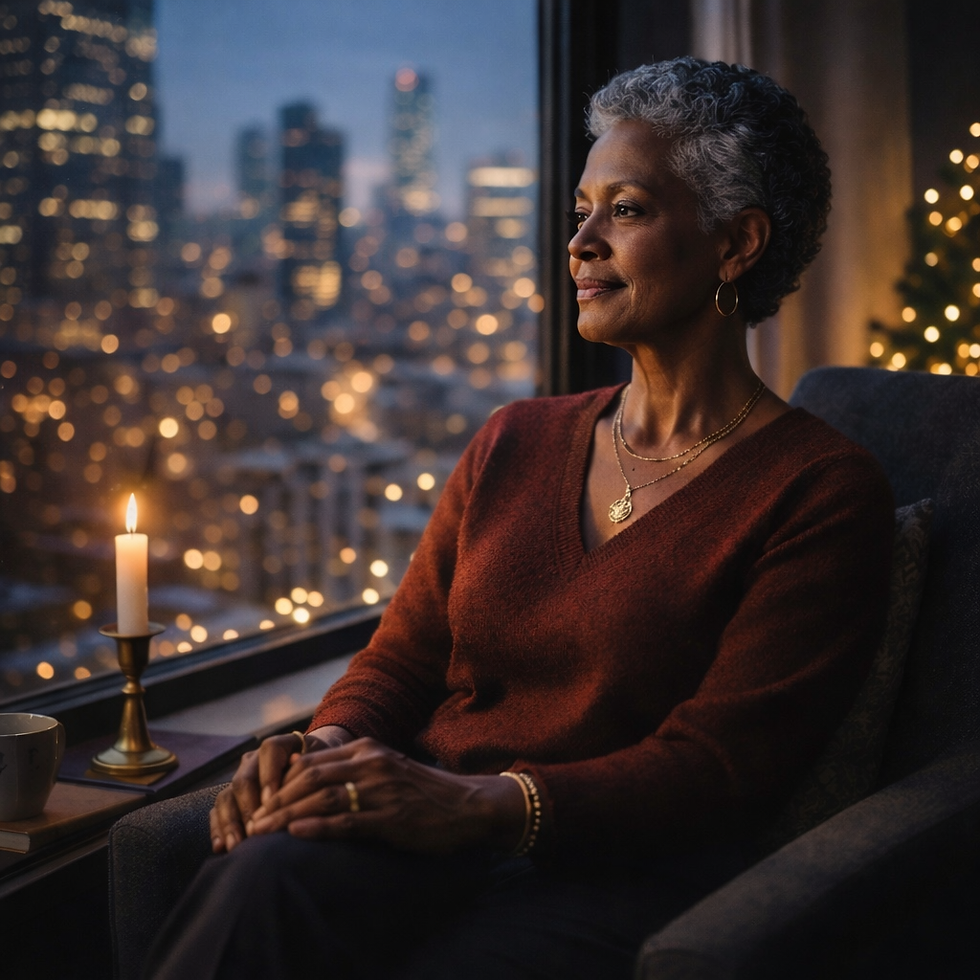Blog #86. Altars and Afterlife
- Jennifer Butz
- Oct 27
- 2 min read
Maybe it starts with something so ordinary you barely notice it: a phrase you use that once belonged to your dad. A grease-stained recipe card written in your grandmother’s looping script. A photo that’s moved with you from house to house for decades.

These traces of love have a way of hanging on. They remind us that those who shaped us don’t disappear; they echo forward in our habits, our humor, our hearts. It’s about the living conversation between what was and what still is.
That conversation is at the heart of Día de Muertos. More than marigolds, skeletons, or midnight cemetery picnics, it’s a centuries-old tradition of refusing to let death have the final word. It’s how we say, across generations and miles and lifetimes: You’re still here. And so am I.
From the outside, it can look theatrical — the painted faces, the flower-strewn altars, the music that winds its way through the night. Día de Muertos is, at its core, a living ritual of connection. It insists that our ancestors’ stories are still unfolding through us.
I remember the first time I saw a home altar adorned with photos, candles, tamales, and a bottle of tequila for a grandfather long gone. It felt less like a shrine to the past and more like a bridge to the present. Here were the fingerprints of lineage, the small everyday gestures that tether us to something larger than ourselves. And I found myself wondering: why do we treat death as an endpoint when, in truth, it’s just another chapter in the story of belonging?
We often think of legacy as something grand and distant — names etched in monuments, foundations that bear our family name. But most legacies are far quieter and far more powerful. They live in the recipes we cook, the stories we retell, and the principles we stand for because someone once modeled them for us. They live in the values we pass to those we love, the courage we summon because someone else showed us how.
That is what Día de Muertos celebrates: the enduring influence of those who came before us and the responsibility we carry to keep their stories alive. In honoring them, we also glimpse the legacy we are creating now — the ways our lives will ripple outward long after we’re gone.
Each act is a bridge — between then and now, between what we’ve inherited and what we’ll leave behind. Because legacy isn’t only what we receive, it’s what we create, consciously or not, in the lives we touch and the values we carry forward.
So light the candle. Share the story. Cook the meal. In honoring those who came before, you’re also shaping the story that will be told of you. And that, perhaps, is the real gift of altars and afterlife: the reminder that we are part of a continuum — shaped by love that outlived its time and shaping the love that will outlive ours.
Ready to build your own altar of meaning? Come gather with women who are shaping their legacies, one story and one bold act at a time. Join the circle at WonderCrone.com — where your life becomes the offering.





Comments